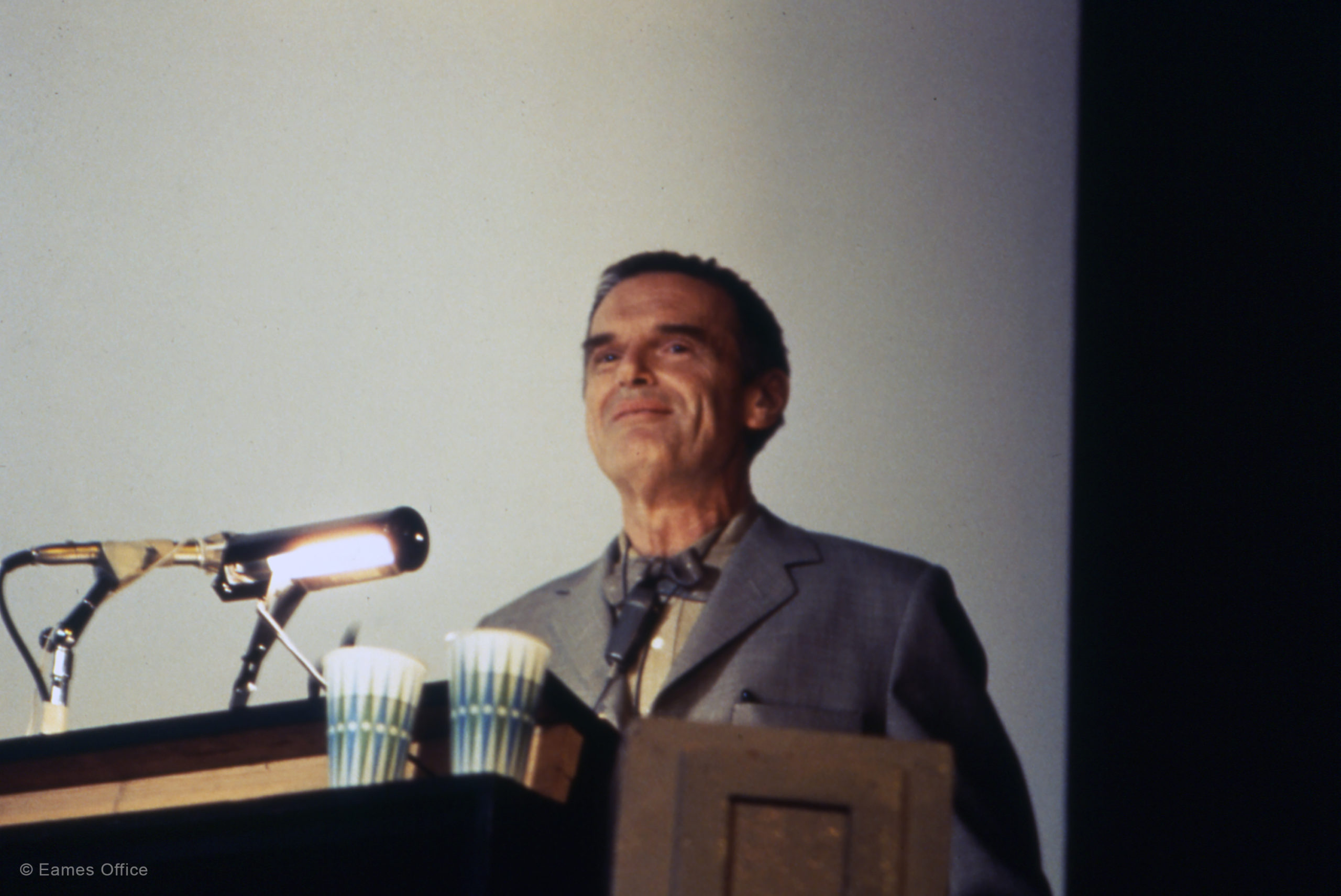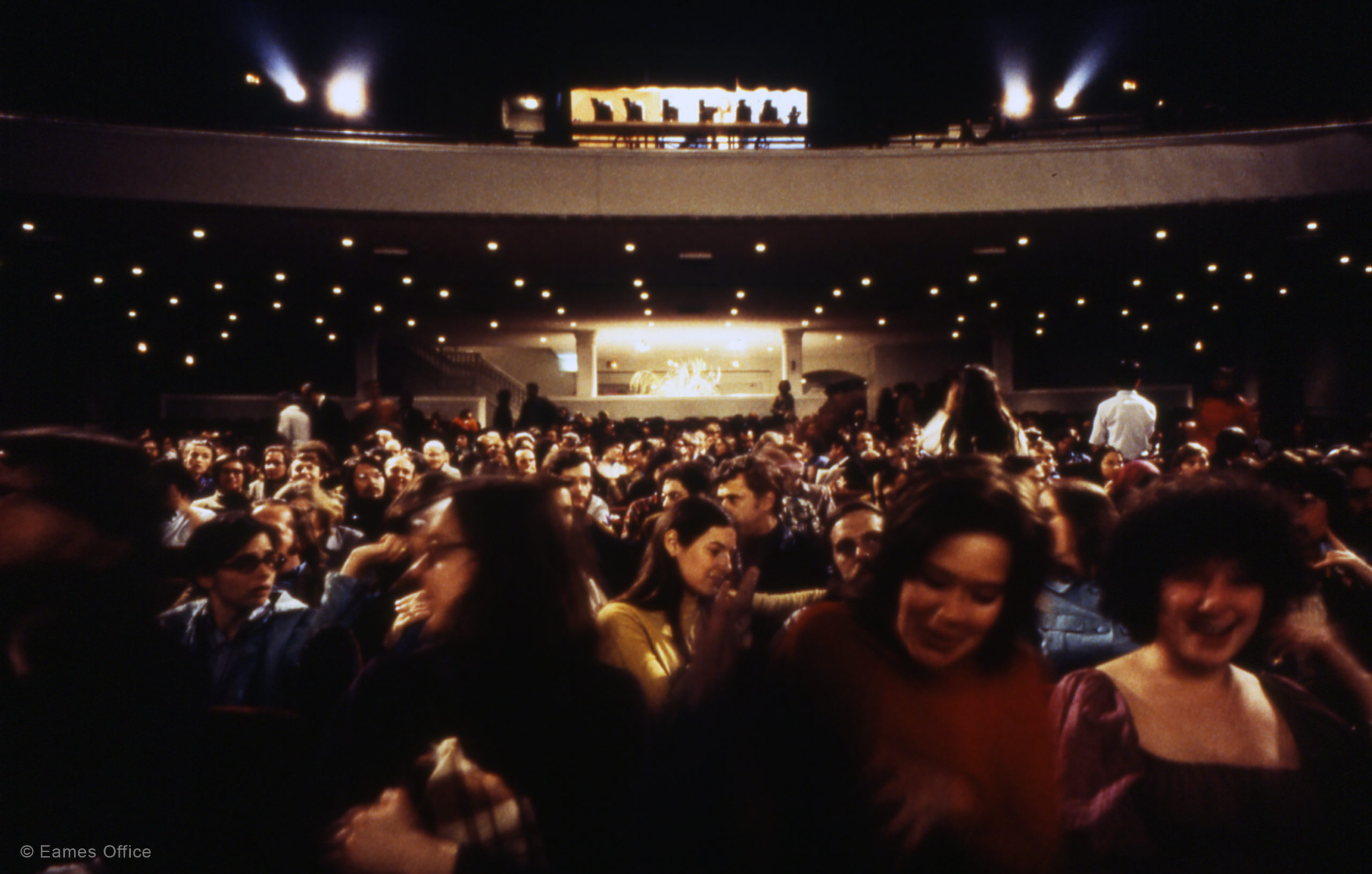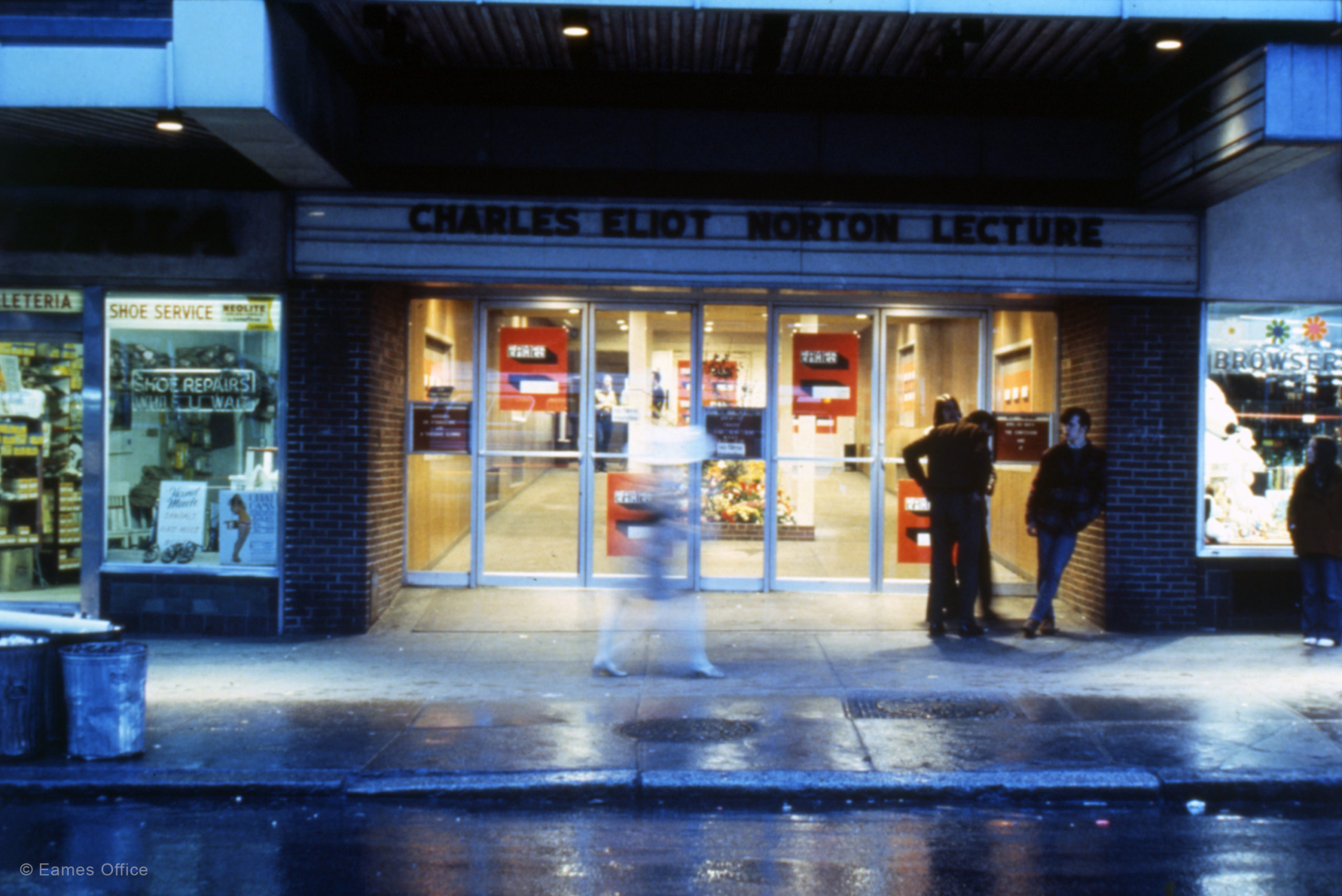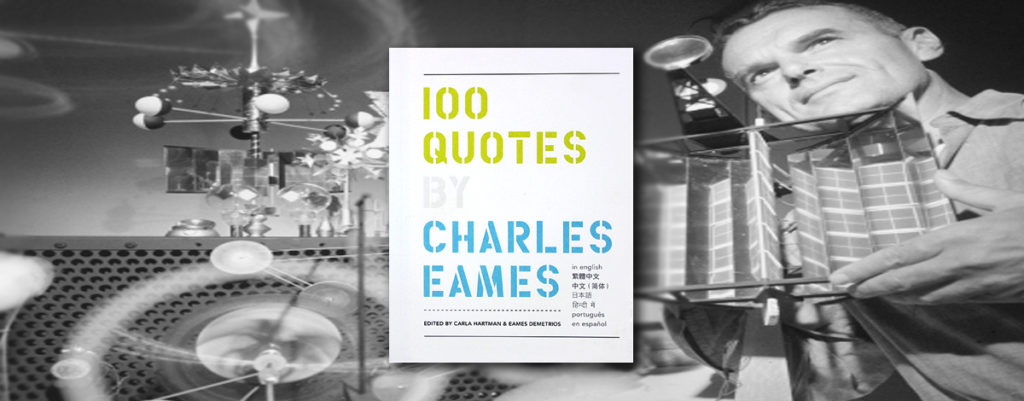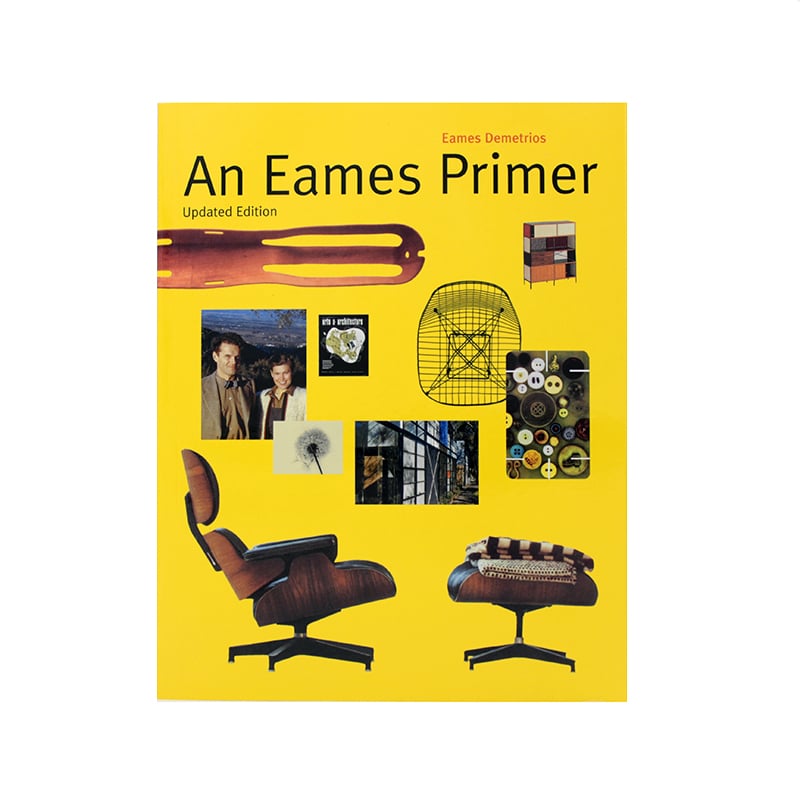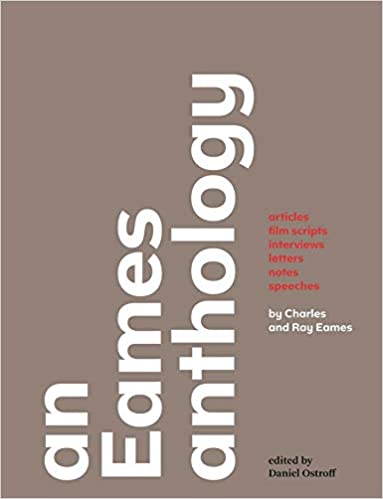Additional Information
In 1970 Charles was appointed the Charles Eliot Norton Professor of Poetry at Harvard University. The Norton chair is traditionally held by an individual who has made a significant contribution to literature, music, or the fine arts. The individual is asked to deliver a series of lectures at Harvard, which are open to the university community. The announced topic of Charles’s lectures was “Problems Relation to Visual Communication and the Visual Environment.” He delivered six lectures over a six-month period (October 1970 to April 1971), first at the Loeb Drama Center and then at the Harvard Theater, where the lectures were moved to accommodate the large crowds who came to hear Charles Speak.
The second lecture in the Norton Lectures was delivered at the Loeb Drama Center on November 2, 1970. After reviewing the main points of the previous lecture, Charles presented his autobiography, which he organized according to pivotal influences on his life (for example, discovering his father’s old photographic equipment and teaching himself wet-plate photography before he learned that film had been invented). From his biographical notes, he moved into the central points of his lecture, the “realities of changing needs and the necessity to devise visual models for matters of practical concern where linear description isn’t enough.”
The film Image of the City and the Louvre slide show was shown as visual evidence that “while it is not possible to predict what the next problems will be, or to prepare specifically for them, it is possible to cultivate a feeling of security about the process of change and the capacity to adapt to it.”
The Louvre slide was used to illustrate the cultivation of enthusiasms and affections and to encourage respect for “things” in themselves as an integral part of life and work.
The film Day of the Dead, made in honor of the Mexican religious celebration, and the slide show Cemeteries were shown at the conclusion of the lecture as examples of the special, necessary place in our lives for formal ritual.
Explore Similar Works
Related Products
Browse a curated selection of Eames Office products we think you’ll love
